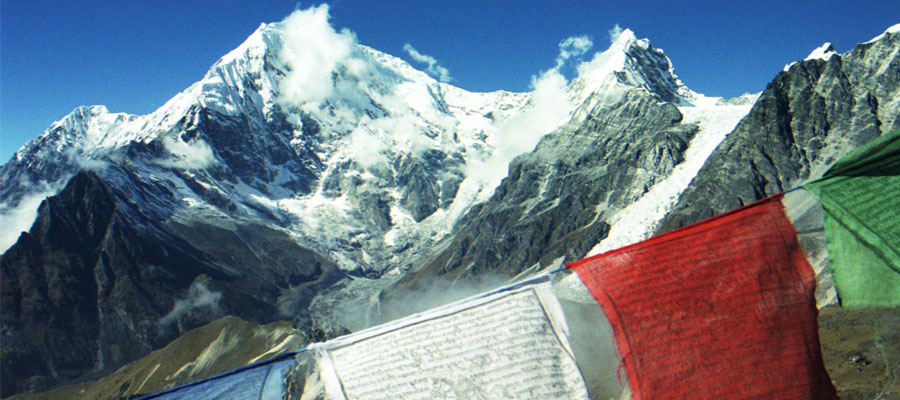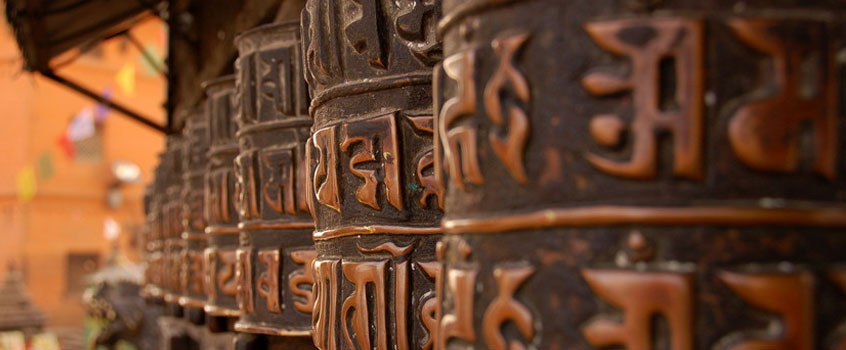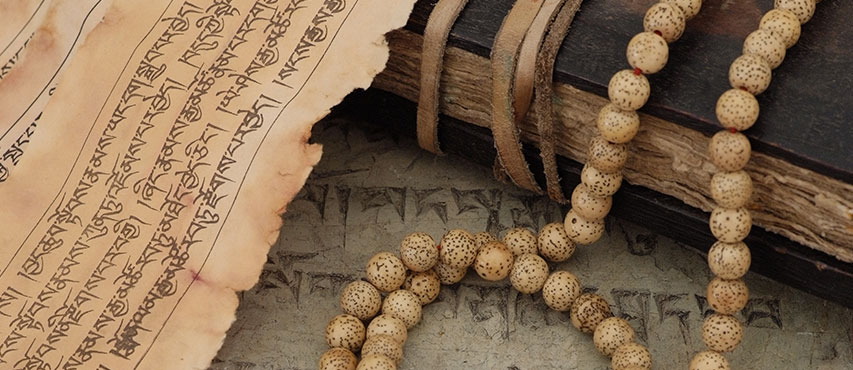Tibetan Buddhism

In Tibet, Buddhist texts had been translated since the 7th century, but Buddhism was not widely practiced. In the 8th century, the King, Trisong Detsen, established Buddhism as the state religion. He invited famous Buddhist masters to Tibet. Among the teachers who came was the legendary Guru Rinpoche (Padmasambhava), who taught widely for many years. The Nyingma school, one of the four main schools of Tibetan Buddhism, mainly follows teachings from this time.

In the latter part of the 9th century, Buddhism was suppressed in Tibet by the shamanist King Langdarma, and remained in decline. In the late 11th century, there was a second period of translation of Buddhist teachings from Sanskrit into Tibetan. At this time, the Sakya tradition, another important school of Tibetan Buddhism, developed.
When the hero Marpa (1012-1097) traveled three times over the Himalayas from Tibet to India, he was able to meditate and study with very highly realized masters. Marpa brought important transmissions, including the highest teachings of the Great Seal (Sanskrit: Mahamudra) to Tibet. He also produced many important translations. The Kagyu tradition of Tibetan Buddhism begins with Marpa. After Marpa, the Kagyu lineage continued through Milarepa and Gampopa to Dusum Khyenpa, the 1st Karmapa. The line of transmission after the 1st Karmapa is known as the Karma Kagyu, which the Karmapas have led ever since. There are also other branches of the Kagyu that have survived until today.

Three hundred years after Marpa, the Gelug school was founded. The most well-known teacher in the Gelug school is the Dalai Lama. The 1st Dalai Lama was a student of Tsongkhapa, who was given his monk’s vows by the 4th Karmapa.
These four schools: Nyingma, Sakya, Kagyu, and Gelug, are the main schools of Tibetan Buddhism. They preserved the Hinayana, Mahayana, and especially the Vajrayana level of Buddha’s teachings for centuries, after Buddhism had been almost completely eradicated in India.
In the 1950s when the Communist Chinese invaded Tibet, teachers of all schools fled to neighboring countries. As a result, Tibetan Buddhist meditation is now widely practiced in the West.